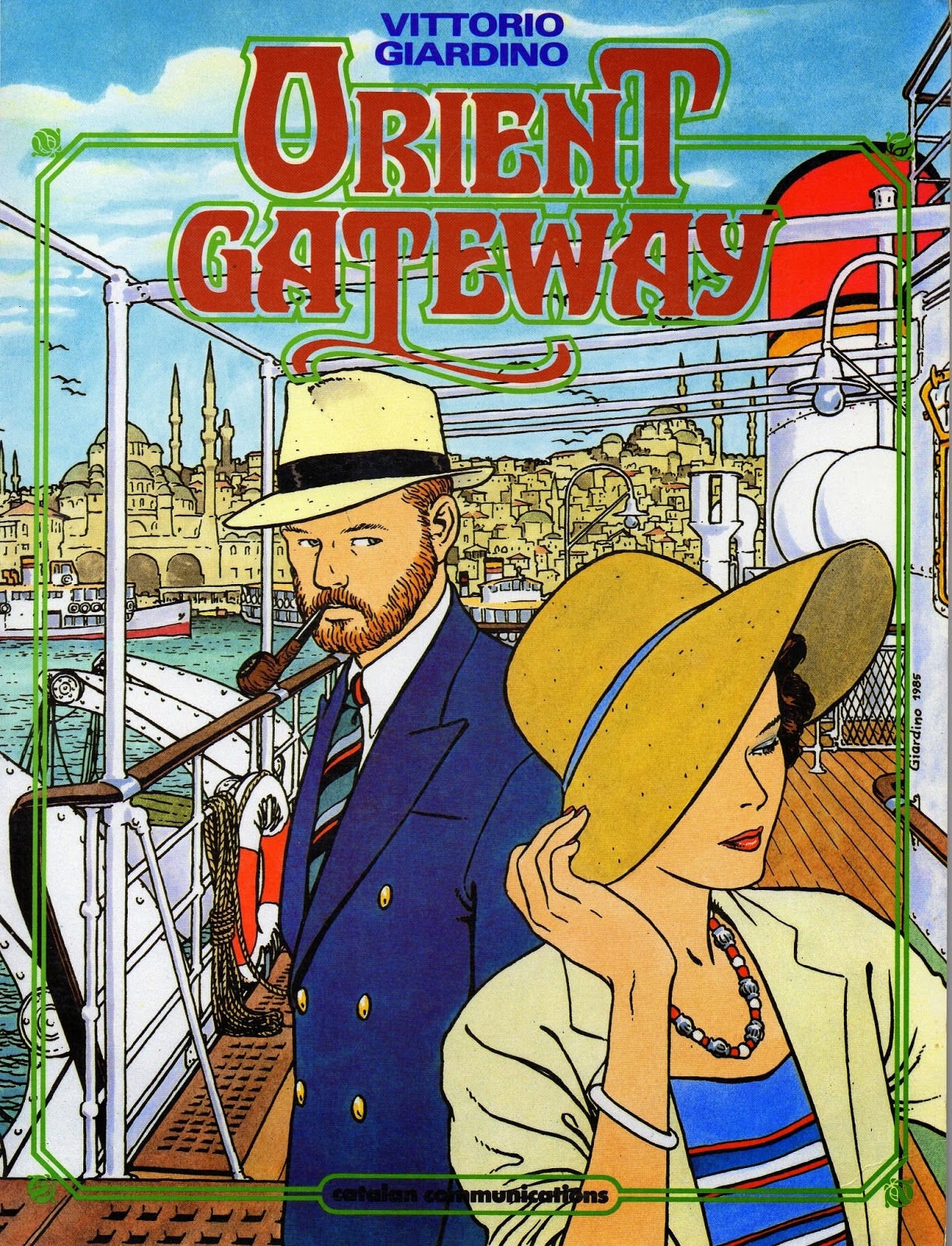HungarianRhapsody
(89 pages, 1986) begins with a quotation from Graham Greene: ‘Danger was a part
of him. Not like a coat that one gets rid of from time to time, but like skin.
One dies with it.’ The story leads up to Hitler’s Anschluss in 1938. Friedman
is blackmailed into helping ‘The Company’ to discover the Abwehr’s undercover
strategy in Budapest. Pipe-smoking Friedman is a sympathetic, realistic
character: this hero actually has the shakes after a shooting or bombing
incident – such mortality is endearing. Gradually, as we and Friedman get
sucked into the plot, encountering double-agents and provocative people, it is
obvious that Friedman is being manipulated. The reason why is kept concealed
convincingly until the end. He becomes romantically involved with the only
survivor of a secret cell, Ethel, who slowly transforms from a timid, freckled
bespectacled pawn into a sensual, brave yet vulnerable woman. Perhaps other
characters possess less depth, exhibiting the stereotypical traits of
1930s/1940s villains, but the air of menace they engender is almo0st palpable.
Indeed, the only wood to be seen is either the furniture or the trees: the
physical movements of all the characters is fluid, their dialogue is generally
realistic. Inevitably, because of the obligatory plot-twists and
double-crossing, the plotline is complex for an illustrated story.
Written
and illustrated by Giardino, it’s obvious that the artist only uses text where
necessary, to add either character or plot; the pictures say a lot without
words; indeed, panel captions are a scarcity, employed merely to denote
time-shifts or scene changes; words are often not needed to create mood, for
the detailed artwork, vital facial expressions and hand mannerisms,
complemented by superb colouring amply supply the appropriate ambience.
Attention to detail is outstanding without dominating the story; all the
clothes, vehicles and buildings seem to be of the period, while the colouring
is rich and varied, even to the intricate patterns of carpets!
The
sequel, Orient Gateway (61 pages, 1987)
is also set in 1938 and involves the Russian NKVD’s search for one of their
engineers, Stern, who has absconded and is hiding in Istanbul. Friedman is
mistaken for a French spy and is sucked into the intrigue. Beautiful Magda
Witnitz seems to be entwined in the plot too, and provides him with romantic
interest and an additional problem: is she for or against him? Throughout,
Friedman maintains a calm cynicism: he only trusts himself, though he does
admit to starting to trust Magda…
The
details of the old Istanbul are as eye-catching as the earlier Budapest, and
repay study. The gallery of exotic characters encountered suggest that Friedman’s
cynicism wasn’t misplaced: few people are what they seem. But even Friedman
discovers that in power-politics there are depths still to be plumbed.
In
their subtle way these two stories seem to be saying that the loss of innocence
began with the build-up to the Second World War. Though interestingly, perhaps
it goes back to 1936 – Giardino has also produced a three-volume graphic novel
about Friedman in the Spanish Civil War, NoPasaran!
If
you appreciate good illustration, you’ll enjoy these books. They’re virtually
story-boards for films, but more detailed.



No comments:
Post a Comment